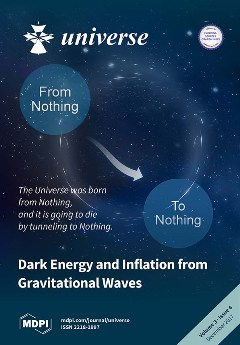Short-range correlations of identified charged hadrons in pp (
0.9, 2.76, and 7 TeV), pPb (
5.02 TeV), and peripheral PbPb collisions (
2.76 TeV) are studied with the CMS detector at the LHC. Charged
[...] Read more.
Short-range correlations of identified charged hadrons in pp (
0.9, 2.76, and 7 TeV), pPb (
5.02 TeV), and peripheral PbPb collisions (
2.76 TeV) are studied with the CMS detector at the LHC. Charged pions, kaons, and protons at low momentum and in laboratory pseudorapidity
are identified via their energy loss in the silicon tracker. The two-particle correlation functions show effects of quantum statistics, Coulomb interaction, and also indicate the role of multi-body resonance decays and mini-jets. The characteristics of the one-, two-, and three-dimensional correlation functions are studied as a function of transverse pair momentum,
, and the charged-particle multiplicity of the event. The extracted radii are in the range 1–5 fm, reaching highest values for very high multiplicity pPb, also for similar multiplicity PbPb collisions, and decrease with increasing
. The dependence of radii on multiplicity and
largely factorizes and appears to be insensitive to the type of the colliding system and center-of-mass energy.
Full article





